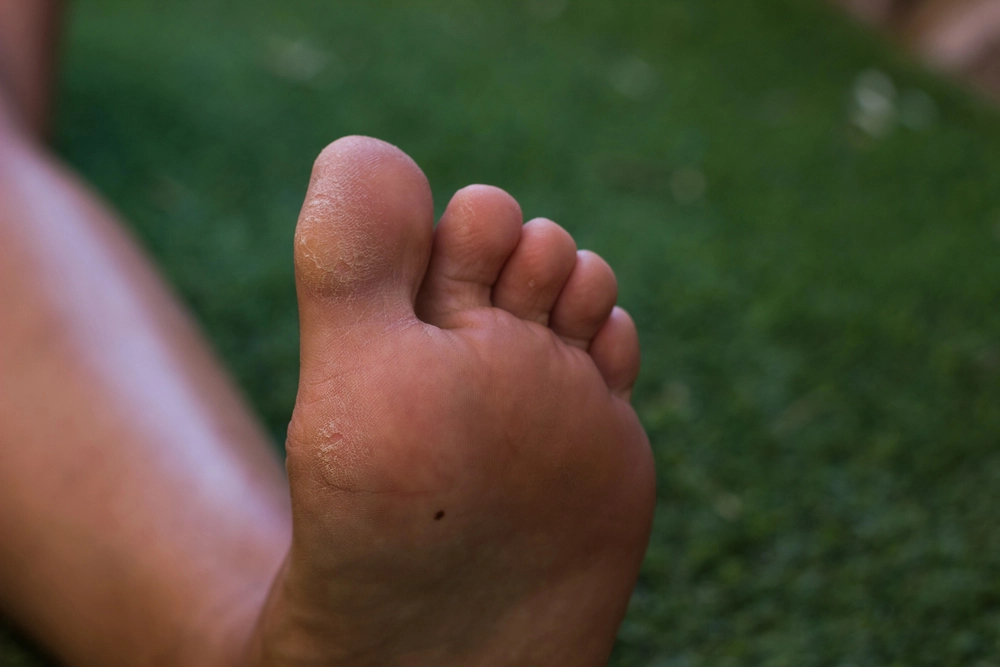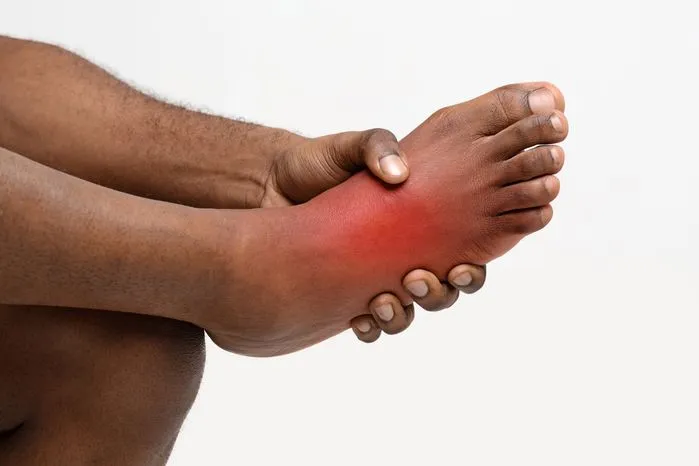
At RelefordInstitute.com, we’ve seen firsthand how a painful lump beneath the foot can disrupt lives, sometimes misdiagnosed for months. Patients often come to us frustrated, having tried home remedies or generalized advice that didn’t work. What sets our approach apart is not just understanding what these conditions might be but also recognizing the subtle clues that differentiate one condition from another.
Top 5 Takeaways
1. Misdiagnosis is common.
- Many patients try home remedies for months with no relief.
2. They vary by cause.
- There are various culprits for this condition.
3. Every condition is different.
- Anatomy, activity level, and history all affect treatment.
4. Proper diagnosis matters.
- Specialists use a combination that helps them make an accurate diagnosis.
5. Tailored treatment works best.
- An array of treatments is available for you.
Understanding Foot Anatomy
Feet, complex structures comprised of many bones, muscles, tendons, and ligaments, bear weight and enable movement, yet their complexity can make them prone to issues. Constant pressure and usage can lead to such problems.
Nerve compression, often resulting from abnormal growths or deformities, can afflict feet. Symptoms might include pain, numbness, or even the formation of a painful one on your sole.
Identifying Its Common Types
Described as bothersome protrusions, they can appear on any part, from the heel to the toes. They exhibit a variety of characteristics that can help determine the nature and possible treatments.
Characteristics like hardness and immovability might point to a serious condition needing medical attention. On the other hand, if it is soft and movable, it could be a harmless fluid-filled cyst or callus, manageable with simple home treatments. Pain associated with the lump can also provide insight into its severity. For example, pain might indicate inflammation or pressure on nearby nerves, whereas a painless lump could be an overgrowth of tissue or a benign tumor.
Regardless of the type, consulting a healthcare professional is always advised for an accurate diagnosis and a suitable treatment plan. Prompt identification and intervention can help prevent complications, ensuring speedy recovery to normal, pain-free mobility.
Potential Causes
Various conditions can lead to these painful growths, each demanding unique treatment approaches and pain management tactics.
- Plantar Fibromas: Nodules known as Plantar Fibromas are noncancerous or benign and grow within the arch of one's foot. Discomfort or pain can arise, particularly during walking or standing.
- Ganglion Cysts: Soft, fluid-filled lumps, called Ganglion Cysts, often appear along tendons or joints in feet and ankles. These can cause discomfort and may necessitate surgical intervention.
- Warts: These growths, resulting from a viral infection, can appear anywhere on the foot. Most commonly, they are found on the plantar side (bottom) of the foot.
- Corns or Calluses: Thickened skin areas known as Corns or Calluses form due to repeated friction or pressure. Pain can result from these, often due to poorly fitted shoes.
- Bone Spurs: Bony projections, known as Bone Spurs, form along bone edges, especially around the heel. These can cause significant pain and may necessitate specific treatments.
Crucial to effective treatment and pain relief is identifying lump causes. For accurate diagnosis and treatment, consultation with healthcare professionals is advised.
Diagnostic Procedures Explained
Finding out what's causing a lump on your foot demands several steps and varied methods. Looking at your foot closely, a healthcare professional first checks the lump for its size, shape, and position during a physical examination.
After that, professionals usually conduct imaging tests. With these tools, different perspectives of your foot are captured, providing a detailed view of the lump area. Structures of the lump, like whether it consists of solid matter or fluid, can be seen. Certain conditions can also be excluded from these tests.
Sometimes, testing a small lump sample under a microscope, a procedure known as a biopsy, might be required. Biopsy results can reveal if the lump is benign or malignant, guiding the treatment plan.
Treatment Options and Prevention
The treatment strategies depend largely on the cause. This approach helps in providing relief and preventing future problems.
Among them are OTC medicines for inflammation and pain. Another alternative entails physical therapy. Your doctor may also suggest better habits and advice about proper shoes or an option to get surgery.
“At The Releford Foot and Ankle Institute, we’ve evaluated hundreds of patients with painful lumps beneath the foot, many of whom arrive misdiagnosed or untreated for months. What we've learned firsthand is that no two lumps are ever the same. It’s not just about what the lump is—it’s about why it formed, how it responds under pressure, and what your activity history reveals. That’s where expert care makes a difference. We don’t rely on cookie-cutter diagnoses. Instead, we combine deep anatomical understanding, advanced diagnostics, and your lived experience to uncover the real cause—and create a treatment plan that works.”
Supporting Facts and Statistics
1. Plantar Fasciitis Is Incredibly Common
- Affects 1 in 10 people at some point in their lives.
- Responsible for 80% of heel pain cases.
- We see it often in patients who stand or walk for long periods.
Source: ncbi.nlm.nih.gov
2. Foot Pain = High Healthcare Costs
- Over 2 million Americans seek treatment each year.
- Annual U.S. treatment costs top $284 million.
- Most costs go to imaging, orthotics, and therapy.
Source: pmc.ncbi.nlm.nih.gov
3. Not All Lumps Are Created Equal
- Plantar fibromatosis causes hard, painful nodules.
- It’s a benign but disruptive condition.
- We’ve treated patients who could barely walk due to these growths.
Source: my.clevelandclinic.org
Why It Matters
These aren’t just stats—they reflect what we treat every day. If you feel a lump under your foot or pain that worsens when you walk, don’t wait. The sooner you get it checked, the better the outcome.
Final Thoughts & Opinion
We’ve seen how it can impact more than just mobility—it often leads to frustration from misdiagnosis and ineffective treatments.
What We’ve Learned from Treating Thousands of Patients:
- Generic treatments rarely work.
- The same diagnosis can present differently depending on various factors.
- Early clues matter.
Our Expert Approach Includes:
- Detailed Evaluation: We use more than one tool when needed.
- Advanced Diagnostics: We utilize the latest technology.
- Tailored Treatment Plan: We understand that all patients are unique. That is why we tailor treatment per patient.
Our Advice:
- Don’t settle for guesswork. If your pain persists, seek a foot specialist who treats beyond the symptoms.
Frequently Asked Questions
1. What could a painful lump under the skin on the bottom of my foot be?
According to The Releford Foot and Ankle Institute, common causes include:
- Plantar fibroma (a benign fibrous tissue growth)
Inclusion cysts or lipomas - Plantar warts (verrucae)
- Ganglion cysts
- Less commonly, nerve sheath tumors or bone spurs
2. Why does it hurt when I walk on the lump?
Walking puts pressure on the sole, which compresses soft tissue structures and nerves. If the lump is near a weight-bearing area like the heel or arch, it can trigger sharp, burning, or aching pain with each step.
3. How can I tell if the lump is a plantar fibroma?
A plantar fibroma is typically:
- Firm, non-mobile
- Located in the central arch or mid-foot region
- Painless at first, but may become painful with pressure.
An ultrasound or MRI may be used for confirmation.
4. Are painful foot lumps ever cancerous?
Very rarely. Most foot lumps are benign. However, if the lump grows rapidly, changes color bleeds, or becomes ulcerated, the Releford Institute recommends immediate evaluation to rule out malignancy.
5. What is the difference between a plantar wart and a cyst?
- A plantar wart has a rough surface, sand-like black dots (clotted blood vessels), and may feel like walking on a pebble.
- A cyst or fibroma is smooth under the skin, may move slightly, and has no skin changes.
6. How is the lump diagnosed by a podiatrist?
The Releford Institute typically uses:
- Physical examination
- Ultrasound or MRI for soft tissue visualization
- X-rays to rule out bone involvement
- In rare cases, a biopsy for histological analysis
7. What treatment options are available for a painful foot lump?
Treatment depends on the cause and may include:
- Custom orthotics or padding to relieve pressure
- Corticosteroid injections to reduce inflammation
- Physical therapy
- Cryotherapy or laser treatment for warts
- Surgical excision for persistent or growing masses
8. When is surgery necessary for foot lumps?
Surgery may be recommended if the lump is:
- Painful and unresponsive to conservative treatment
Increasing in size - Causing significant gait disruption
The Releford team emphasizes minimally invasive approaches when possible.
9. How can I relieve pain at home while waiting for treatment?
Try:
- Ice therapy (15–20 minutes)
- Over-the-counter anti-inflammatories (e.g., ibuprofen)
- Cushioned insoles or offloading padding
- Avoiding barefoot walking and high-impact activities
10. Can tight shoes or overuse cause these lumps?
Yes. Friction, pressure, or repetitive trauma from poorly fitting footwear can contribute to cysts, calluses, bursitis, or fibromas. The Releford Institute often advises footwear modifications as part of treatment.
11. Should I be concerned if the lump keeps coming back after treatment?
Yes. Recurrent lumps may indicate an underlying biomechanical issue, incomplete removal, or chronic irritation. A specialist evaluation is needed to prevent long-term complications.
12. How can I prevent foot lumps from developing in the future?
- Wear supportive, well-fitted footwear.
- Use orthotics if you have high arches or flat feet.
- Maintain foot hygiene and moisture control.
- Stretch and strengthen the plantar fascia and surrounding muscles.
- Schedule routine foot checks if you’re diabetic or prone to foot issues.

















